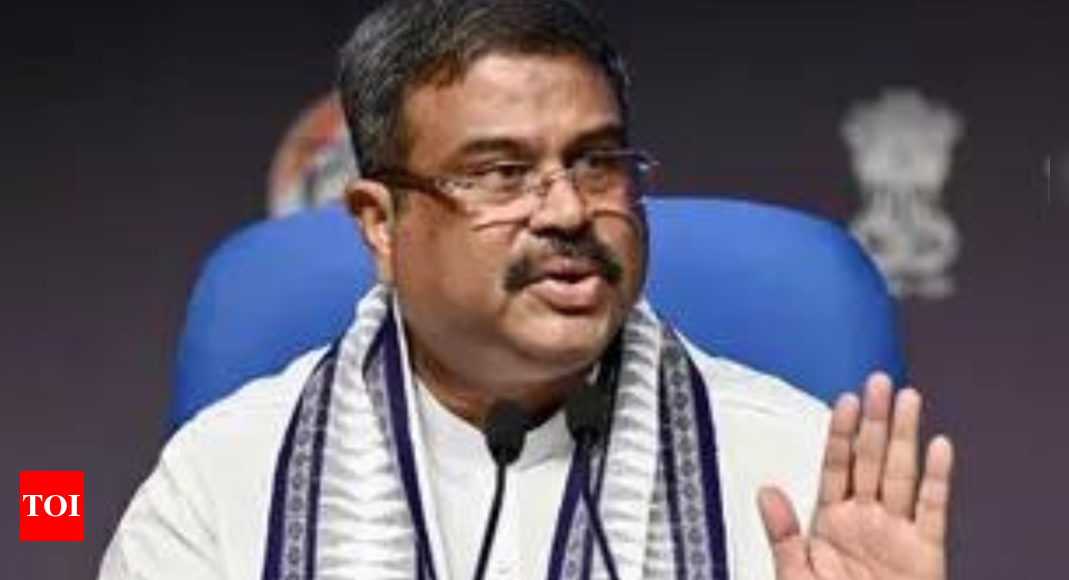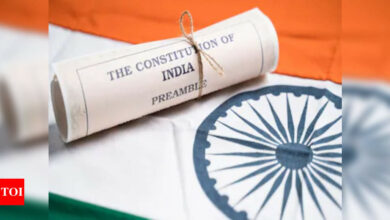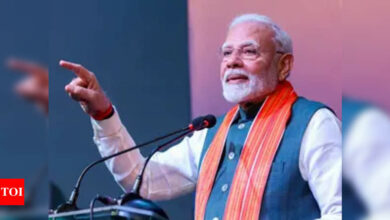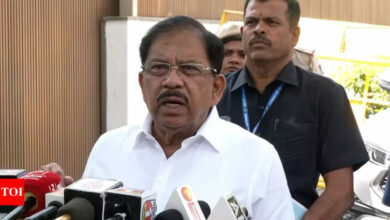India
‘Odisha’s Subhadra Scheme paves way for women empowerment’ | India News – Times of India



In the intricate tapestry of nation building, women often form the backbone of progress. This profound recognition is embodied in the recently announced ‘Subhadra’ scheme, launched by Prime Minister Narendra Modi on September 17, the day that marks his birthday. This landmark initiative, explicitly designed for the women of Odisha, reflects a broader commitment to empowering women, who are undeniably the true architects of the nation’s future. Named after Devi Subhadra, beloved sister of Odisha’s presiding deities Lord Jagannath and Lord Balabhadra, the scheme captures the essence of Odisha’s rich cultural heritage that reveres feminine strength and guardianship. By honouring this ancestral legacy, the Subhadra Initiative aims to uplift women in Odisha and provide them with essential resources to grow and thrive.
With an ambitious budget of Rs 55,825 crore allocated for the next five years (2024-2029), Subhadra plan promises annual financial assistance of Rs 10,000 to eligible women beneficiaries between the ages of 21 and 60. This assistance will be distributed in two instalments of Rs 5,000 each: one coinciding with Raksha Bandhan and the other with International Women’s Day – two meaningful dates that symbolise the protection and celebration of womanhood.
Thus, an eligible woman beneficiary will receive Rs 50,000 in five years. It is estimated that over a crore of eligible women will benefit from the Subhadra scheme, making it — in terms of coverage — the largest Stever welfare programme of the state.
The Modi government has already set up a credible ecosystem with seamless integration of what is known as the JAM trinity: Jan Dhan account, Aadhaar and mobile number of the beneficiaries. This has resulted in seamless direct transfer of financial benefits under various public welfare schemes, thereby curbing the potential for corrupt practices. Today, nearly one crore women of Odisha have Jan Dhan bank accounts; hence, efficient implementation of the Subhadra scheme and Direct Benefit Transfer (DBT) to women beneficiaries should not be a challenging feat.
Economists believe that if the per capita expenditure of the government is one rupee, the impact on the economy will be almost five times greater in the form of a ‘multiplier effect’. Thus, the annual financial benefit of Rs 10,000 for eligible women under the Subhadra programme will have a multiplier effect of generating Rs 50,000 per woman to the economy. Thus, the total earmarked expenditure of Rs 55,825 crore under the programme in five years will yield benefits of almost Rs 2.5 lakh crore to the state’s economy, while empowering women to achieve economic independence and a vastly improved life for the family. Here, the programme symbolises more than financial assistance; it represents a transformative opportunity for women to assert their rightful role in society and contribute to the progress of the country.
Considering the plight of women in Odisha and their continued neglect over decades, Prime Minister Modi made a solemn promise to the mothers and sisters of Odisha to work for their upliftment and empowerment. The Subhadra Plan is a result of the solemn promise made to the women of Odisha and it undeniably reflects a larger narrative of women empowerment that is being driven by Prime Minister Modi.
Subhadra is more than a plan; it is an expression of the philosophy of the Modi government. As the prime minister himself said, “India’s dreams will come true only if her daughters can fly as high as her sons.” This belief is the cornerstone of the government’s reform agenda that has defined his leadership.
Today, women empowerment is at the heart of government policies. Women are no longer just passive beneficiaries of welfare schemes but active participants in the country’s growth story. From Pradhan Mantri Jan Dhan Yojana, which has enabled millions of women to access financial services, to Pradhan Mantri Ujjwala Yojana, which has freed them from the drudgery of smoky kitchens, to MUDRA Yojana, which has supported women in pursuing their entrepreneurial dreams, the Centre’s policies have consistently demonstrated an acute awareness of women’s issues and the need for their financial independence. Not surprisingly, women have responded with overwhelming support, giving our government a historic third term in a row.
True empowerment happens when women are not just recipients of benefits but also leaders in driving change. The shift from ‘women development’ to ‘women-led development’ is a testament to this fact. Initiatives like Lakhpati Didi Yojana, which aims to empower three crore women through self-help groups, provision of drones through central financial assistance to 15,000 women SHGs across states, MUDRA loan enhancement for women entrepreneurs and many other schemes show a clear and consistent focus on women empowerment. Nari Shakti is no longer a far-off ideal; it is the engine that drives India’s development story. PM Modi led Nari Shakti Vandan Adhiniyam, 2023, and paved the way for women’s political empowerment by reserving one-third of seats for women in the Lok Sabha and state legislative assemblies.
Today, we celebrate the remarkable strength and resilience of women as they explore uncharted territories, break barriers and shatter glass ceilings. Initiatives like the Subhadra Plan are not only redefining the future of Odisha, but also paving the way for an India where every woman can dream, thrive and lead with confidence. As the Prime Minister dedicates this transformative initiative to the women of Odisha, we reaffirm our commitment to fostering a society where women stand shoulder to shoulder with men, sharing equal opportunities and responsibilities. Odisha’s Subhadra Plan represents just one crucial step in an ongoing journey towards women-led development – a journey that is integral to the vision of both a Viksit Odisha and a Viksit Bharat.
(The author is the Union Minister of Education. The views expressed are personal)
With an ambitious budget of Rs 55,825 crore allocated for the next five years (2024-2029), Subhadra plan promises annual financial assistance of Rs 10,000 to eligible women beneficiaries between the ages of 21 and 60. This assistance will be distributed in two instalments of Rs 5,000 each: one coinciding with Raksha Bandhan and the other with International Women’s Day – two meaningful dates that symbolise the protection and celebration of womanhood.
Thus, an eligible woman beneficiary will receive Rs 50,000 in five years. It is estimated that over a crore of eligible women will benefit from the Subhadra scheme, making it — in terms of coverage — the largest Stever welfare programme of the state.
The Modi government has already set up a credible ecosystem with seamless integration of what is known as the JAM trinity: Jan Dhan account, Aadhaar and mobile number of the beneficiaries. This has resulted in seamless direct transfer of financial benefits under various public welfare schemes, thereby curbing the potential for corrupt practices. Today, nearly one crore women of Odisha have Jan Dhan bank accounts; hence, efficient implementation of the Subhadra scheme and Direct Benefit Transfer (DBT) to women beneficiaries should not be a challenging feat.
Economists believe that if the per capita expenditure of the government is one rupee, the impact on the economy will be almost five times greater in the form of a ‘multiplier effect’. Thus, the annual financial benefit of Rs 10,000 for eligible women under the Subhadra programme will have a multiplier effect of generating Rs 50,000 per woman to the economy. Thus, the total earmarked expenditure of Rs 55,825 crore under the programme in five years will yield benefits of almost Rs 2.5 lakh crore to the state’s economy, while empowering women to achieve economic independence and a vastly improved life for the family. Here, the programme symbolises more than financial assistance; it represents a transformative opportunity for women to assert their rightful role in society and contribute to the progress of the country.
Considering the plight of women in Odisha and their continued neglect over decades, Prime Minister Modi made a solemn promise to the mothers and sisters of Odisha to work for their upliftment and empowerment. The Subhadra Plan is a result of the solemn promise made to the women of Odisha and it undeniably reflects a larger narrative of women empowerment that is being driven by Prime Minister Modi.
Subhadra is more than a plan; it is an expression of the philosophy of the Modi government. As the prime minister himself said, “India’s dreams will come true only if her daughters can fly as high as her sons.” This belief is the cornerstone of the government’s reform agenda that has defined his leadership.
Today, women empowerment is at the heart of government policies. Women are no longer just passive beneficiaries of welfare schemes but active participants in the country’s growth story. From Pradhan Mantri Jan Dhan Yojana, which has enabled millions of women to access financial services, to Pradhan Mantri Ujjwala Yojana, which has freed them from the drudgery of smoky kitchens, to MUDRA Yojana, which has supported women in pursuing their entrepreneurial dreams, the Centre’s policies have consistently demonstrated an acute awareness of women’s issues and the need for their financial independence. Not surprisingly, women have responded with overwhelming support, giving our government a historic third term in a row.
True empowerment happens when women are not just recipients of benefits but also leaders in driving change. The shift from ‘women development’ to ‘women-led development’ is a testament to this fact. Initiatives like Lakhpati Didi Yojana, which aims to empower three crore women through self-help groups, provision of drones through central financial assistance to 15,000 women SHGs across states, MUDRA loan enhancement for women entrepreneurs and many other schemes show a clear and consistent focus on women empowerment. Nari Shakti is no longer a far-off ideal; it is the engine that drives India’s development story. PM Modi led Nari Shakti Vandan Adhiniyam, 2023, and paved the way for women’s political empowerment by reserving one-third of seats for women in the Lok Sabha and state legislative assemblies.
Today, we celebrate the remarkable strength and resilience of women as they explore uncharted territories, break barriers and shatter glass ceilings. Initiatives like the Subhadra Plan are not only redefining the future of Odisha, but also paving the way for an India where every woman can dream, thrive and lead with confidence. As the Prime Minister dedicates this transformative initiative to the women of Odisha, we reaffirm our commitment to fostering a society where women stand shoulder to shoulder with men, sharing equal opportunities and responsibilities. Odisha’s Subhadra Plan represents just one crucial step in an ongoing journey towards women-led development – a journey that is integral to the vision of both a Viksit Odisha and a Viksit Bharat.
(The author is the Union Minister of Education. The views expressed are personal)




